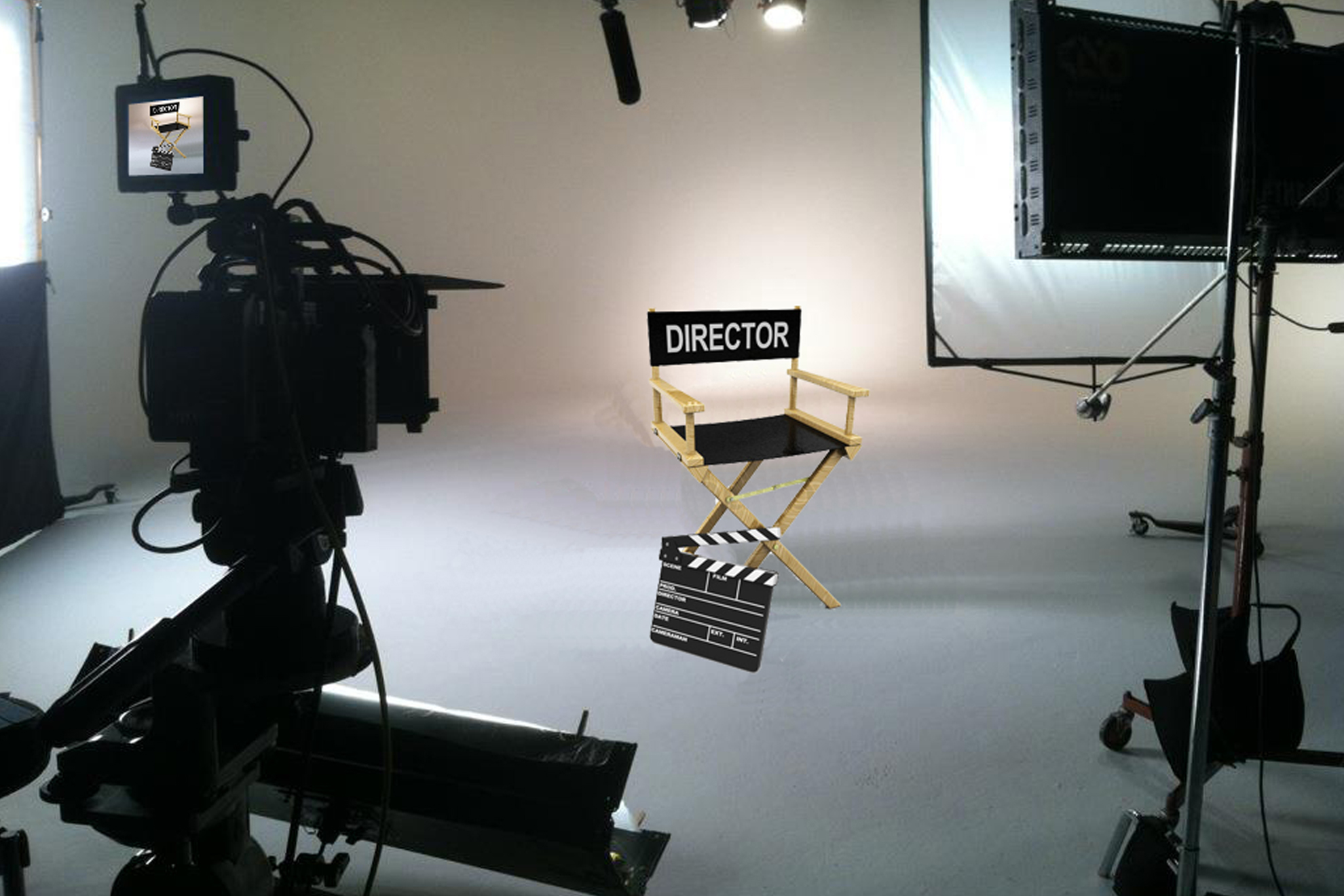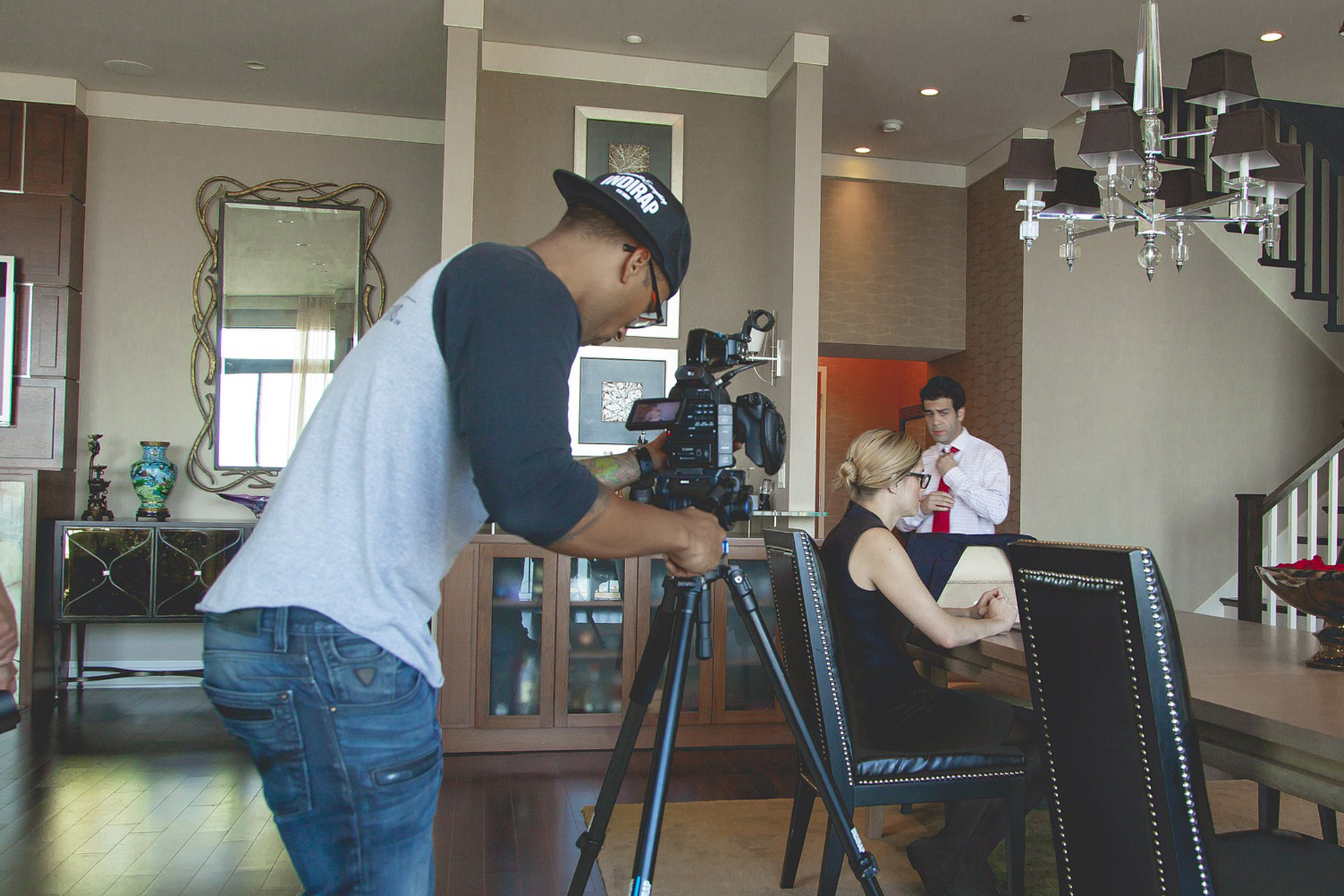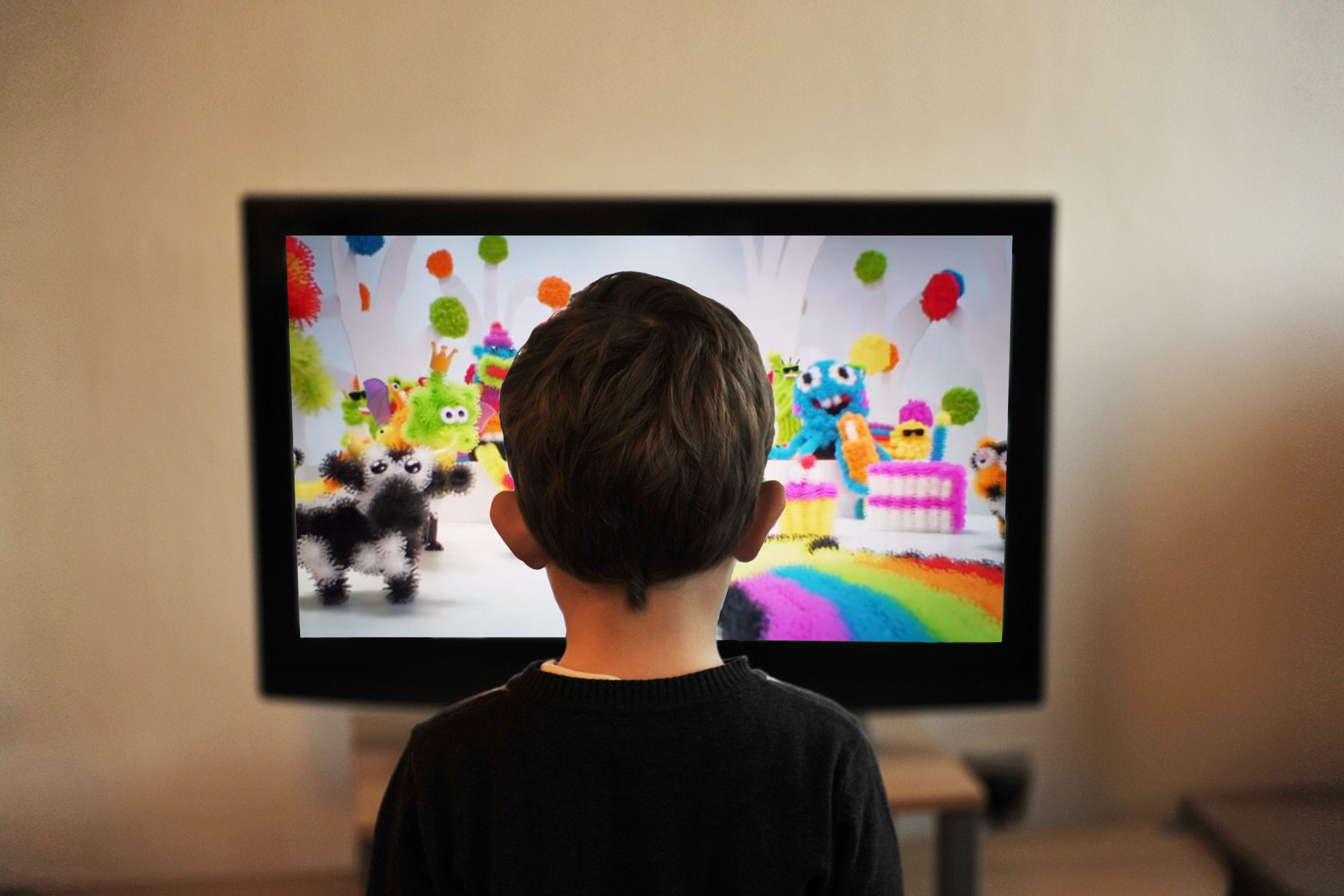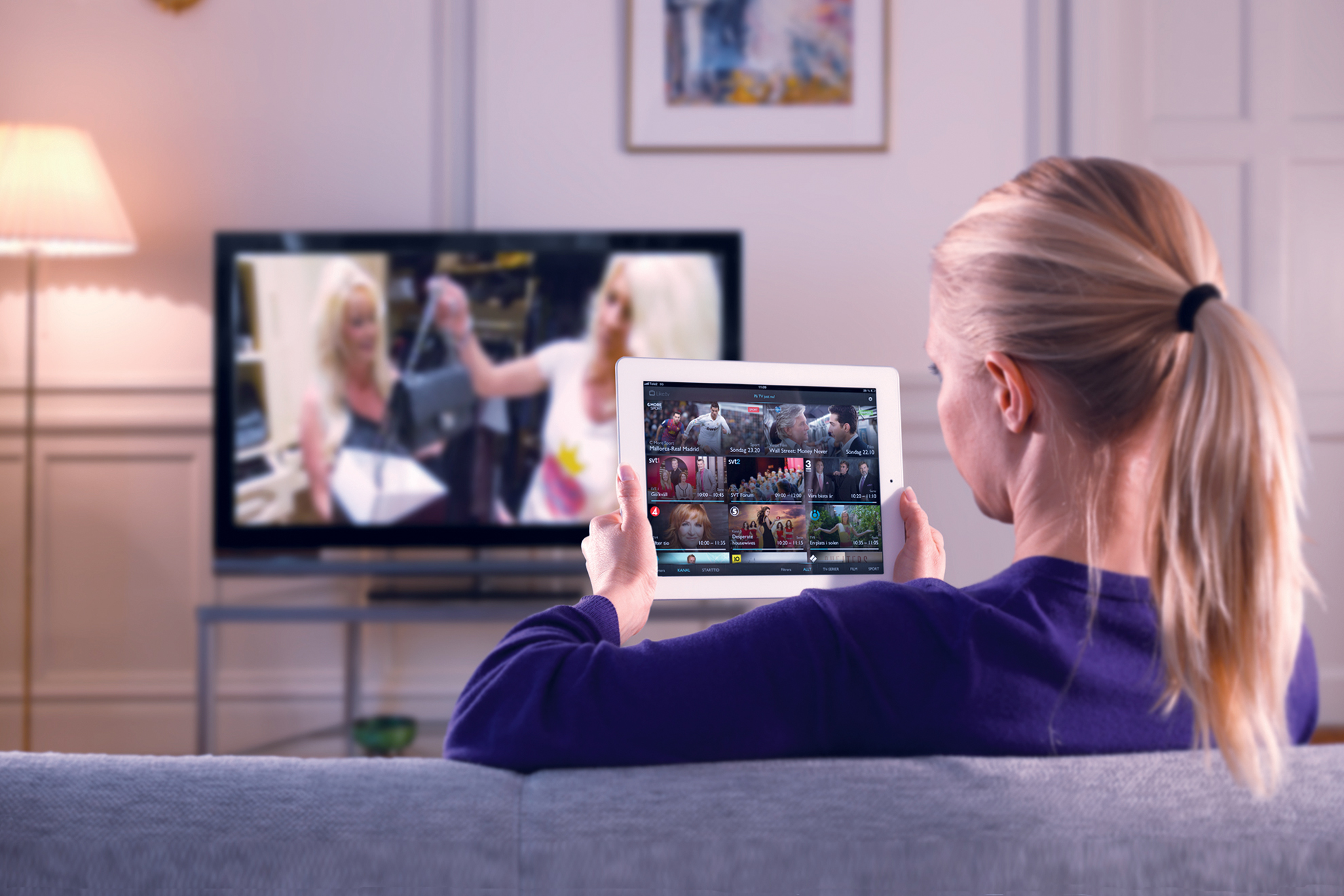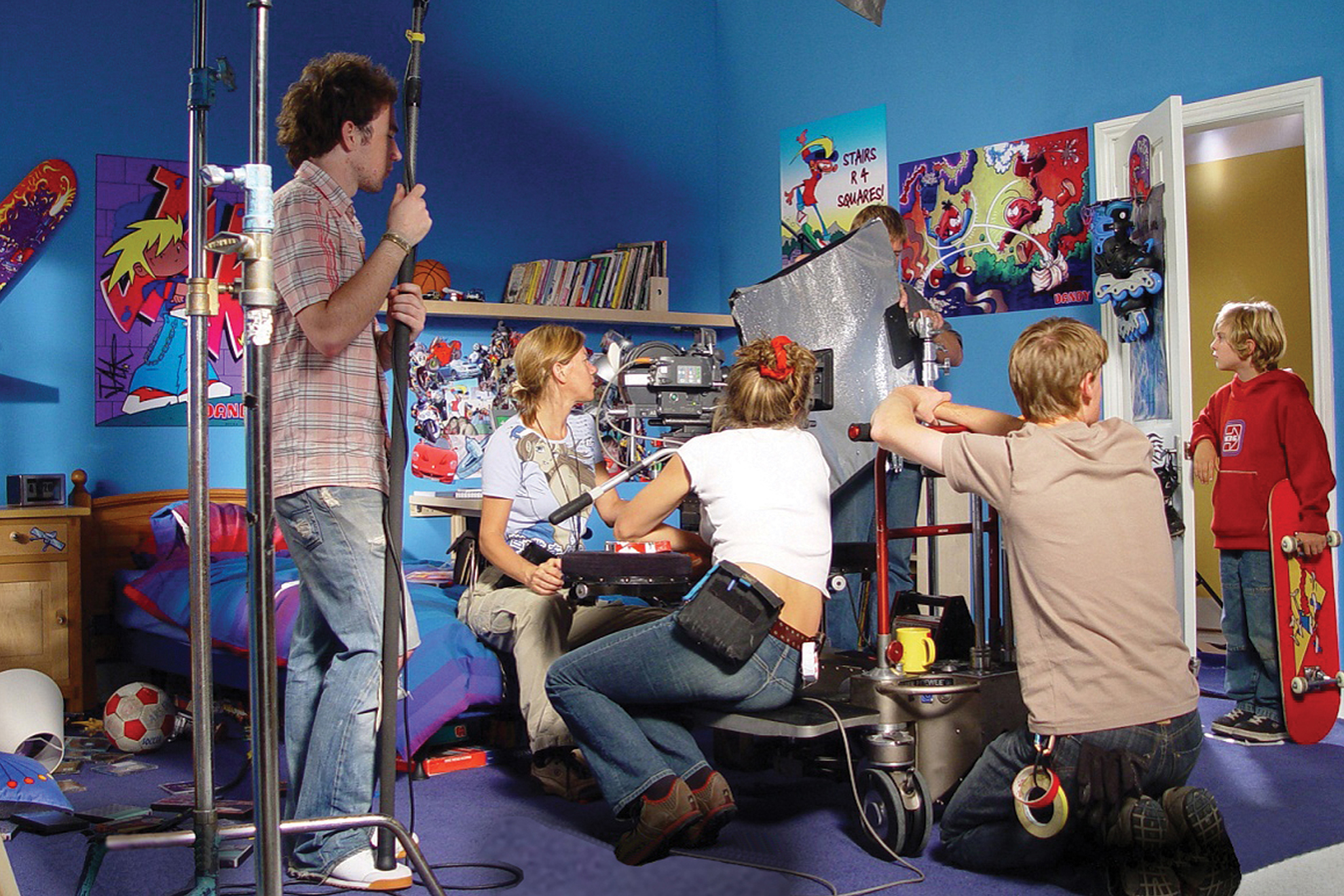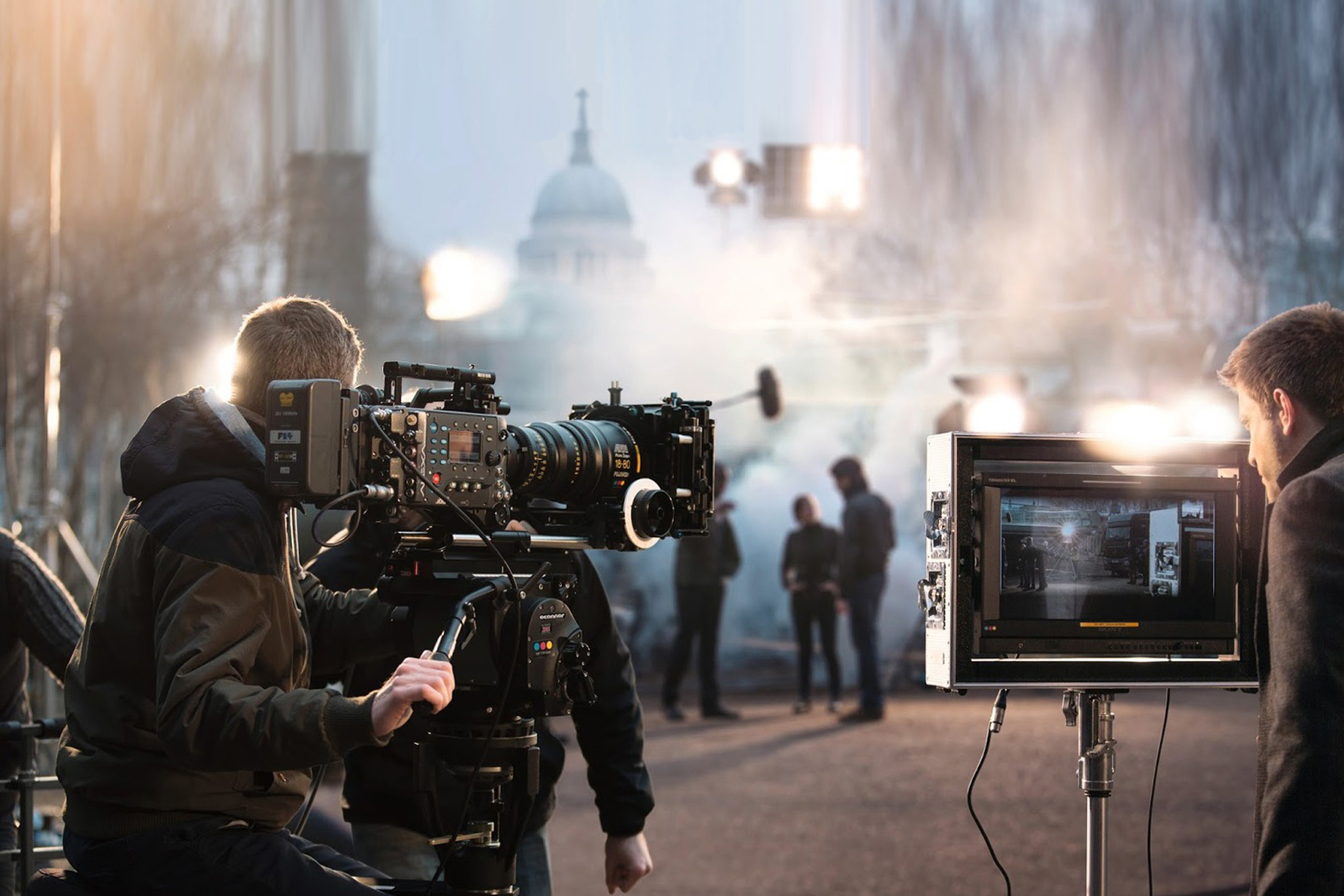The most important factor for the success of any infomercial is the time that you take to talk about the product. The more time viewers spend with the commercial message, the more likely they are to buy. The more you tell, the more you sell. The longer they watch, the longer you’re in a relationship, and the greater the chances of closing the sale. While time is the greatest asset you have working for you—right out of the gate—with infomercials, it is the complex set of creative elements that fill that time that makes or breaks your program. Your creative determines how much time your viewer gives to your message.
Infomercial Creative “To Do” List:
1. Create a sense of urgency to buy.
Although you have a decent period of viewing time, you must remember that you have only seconds to attract viewers at any point during the infomercial. Tried and trusted “Order-Now Motivators” are old tricks of the trade, though certainly not effective for all products. Some classics in infomercials include, “If you call now you’ll receive a special bonus!” or “Two for one! or “Special bonus!” They might not work for your product, but they’re a good place to start. And, remember, whatever you offer, you must deliver on any promises. If that’s not possible leave it out.
2. Establish presentation and product credibility.
Whatever the product, it’s important to remember that an infomercial’s success is based on credibility. It is a purchasing decision that is emotionally sparked but rationally concluded. Infomercial creatives need to attract viewer attention through entertaining and well-paced story lines or information. Once attracted, prospective buyers must trust in the quality and promise of the product being sold.
3. Use a true believer as the commercial spokesperson.
After the quality and benefits of each specific product, the presenter is most critical to the success of the majority of infomercials today. A powerful on-camera product presenter can absolutely make the difference between success or failure. The only way to increase the power of that presenter is if he or she has used the product and believes in it. That combination of professional skill and personal conviction—the real true believer—will produce a powerful statement for your product and its benefits. Again, however, use this approach only if it’s right for your product.
4. Product is king.
Don’t stray too far from the all-important product. All your copy should tie back to product features, benefits, and uses. Identify the primary buying motivator: love (self-esteem, vanity), security (power, fear of loss), acquisition (greed, wealth), pleasure (pain relief, entertainment).
5. Showcase an irresistible offer.
Surprise them. Build value. Give them more than they expected. But wait, there’s more! (You don’t have to say it, but do it in what you’re offering.) People love a bargain. Bonuses, premiums, discounts, coupons. “Free” is the strongest word in direct marketing. But don’t give them too much; it’s confusing and damages credibility. (Why are they giving me so much? What’s the catch?) During the scripting, I encourage my writers to compile their list of hooks, content points, and key selling words, phrases, and images. Every product has unique properties that are critical to the essence of communicating the product’s benefits.
6. Emphasize information/content over entertainment.
Don’t over-entertain and under-sell. The entertainment factor should never take the viewers so totally away from their real world that it hampers their ability to make a rational decision to buy. People order when logic justifies an immediate response. Too much entertainment distracts them from making a logical decision.
7. Pacing is everything.
It’s a perfect marriage of sight and sound: benefits, features, uses, success stories, credibility builders, expert testimony, research, guarantees, offer details, call to action. Repeat the cycle three times. Once short line, then a broad paragraph. Seven-second sound bites, 15-second voice-over. Sell the benefits. Tell a joke. It’s not only what you say, but also when you say it. If you crowd the viewers, back off. Inhale; exhale.
Keep viewers interested, pleasingly off balance, anticipating. Be unpredictable, yet believable. Pace it. Rhythmically move between on-camera spokesperson, cover footage, brief testimonial inserts, appropriate digital video effects. Spice with music when appropriate.
8. Create a high perceived-value for the product.
The strength of direct-response television has always been its positioning as a personal—not universal—message to the television viewer. Infomercials take the time to outline specific solutions to individual’s problems. You know your target audience well. Surprise them. Offer an attractive premium-something for nothing, easy payments, discounts on upsell or cross-sell products. Give a little and get a lot back. Your relationship with your customer will be off to a great start.
9. Mention the product name whenever possible—at least three times a minute.
Much like in-person sales, where your goal is to use the prospect’s name three times in the first 30 seconds, make sure you repeat the product name over and over again. For example, Braun’s hand-held blender infomercial must include the words: Braun’s superior quality, world-class Braun products, Braun’s renowned craftsmanship, and so on. There’s power in names.
10. Complete a full sales cycle before doing your call to action.
Capture their Attention, create Interest, instill Desire, and finally motive them to Action (AIDA). When you’ve done your work of establishing a relationship with the viewer, building credibility, and demonstrating the product benefits, you’ve earned the right to give price, payment terms, and to ask them to call now! If you ask for the order too soon you aren’t respecting the viewer’s right to information before making a buying decision. You’ll lose the sale.
11. Call to action (CTA). The CTA closes the AIDA cycle and the sale.
They are the commercials within the infomercial, inserted three times throughout the program. In the call to action, review all the highlights of your product, then urge viewers to call. Recreate a miniature experience of the emotions you evoked in the show body. Refresh viewer’s memories just before you ask them to order. Display the number on the screen for as much of the time as possible. Keep the mailing address up for twice the time it takes to read. Preferably, the announcer should state the number and mailing address a minimum of two times. Payment terms, credit cards, COD, and guarantee policy should also be visible on the tag page and stated, if time allows. Showcase the installment price, if it’s a multi-pay offer, but be sure to graphically show the full-payment price.
12. Make it easy to understand.
Paint word pictures. Good documentary writers know this rule well. Use 25-word paragraphs, seven-second sound bites. Use colourful adjectives. No million-dollar words. The ear listens while the eyes watch, and the combined experience is infinitely more powerful if you don’t state the obvious—that which the eyes are seeing. Your audio track is married to, yet separate from, the video. Be specific, not general. Use photo captions, subheads and on-TV-screen support graphics. Simple offer, simple order graphic page.
13. Choose excellent talent.
Often a personality, celebrity, or non-celebrity will be intimately connected to a product. The talent might be a major product asset: either the spokesperson knows the product pitch better than anyone, a lot of money has already been spent on associating the product with the specific celebrity.
Infomercial talent is the individual who must create a relationship with the home viewer within the length of the informercial! That’s incredibly valuable time, which we entrust to a celebrity to achieve a positive relationship with viewers and gain their trust. We buy from people we like.
In the past many celebrities wouldn’t touch infomercials. Recently it appears that the tide is turning. Celebrities are useful in infomercials for two reasons: First, their appearance on screen will stop the remote control long enough (two to 10 seconds) to capture their interest. Second, they give credibility to the product. If your product presenter doesn’t have vivid personality, and/or your product or company name is not a household word, consider using a celebrity.
14. Craft a script that emphasizes benefits and answers objections.
Writing an infomercial is like having a long conversation with a mute person who can’t respond except with his or her dialing finger. You must anticipate the viewer’s every response to your ongoing monologue. You must anticipate and answer the objections that will typically arise. And you must get them to agree with your common-sense statements as often as possible. The more they agree, the more they’re in a relationship. Remove their doubts—with a smile. Move them from fear and skepticism to trust. Be credible. Use expert testimonials and endorsements. Be honest, sincere, and genuine. Tell them why they need your product now, why the price is a great value, and why they should get it from you. Sell the sizzle. Folks want to know the benefits—what the product can do for them.
15. Sell the benefits; close with emotion.
Emotion will always win out over intellect. Don’t ever ask, “What do you think?” Instead ask, “How do you feel?” Use emotional, evocative language and visual images. Be enthusiastic and passionate. Inspire excitement. Be entertaining and humorous (within reason). Create the emotions that they will feel when using your product. Give them a taste and they will want it all. Let them know you like them. Logic justifies, but emotion buys.
16. Be powerful and real.
Your purpose is to motivate immediate action. You want the viewer to pick up the phone and order right now or go to a local retail outlet now. Communicate your enthusiasm for the product. Don’t let the sale happen; make it happen.
17. Use quality product shots.
It seems basic, but the perceived quality of your featured product depends greatly on what it looks like on the infomercial. Make sure the colors are bright, edges are sharp, and the product is angled for just the right presentation. The best scriptwriting in the world can’t override a lousy product image on screen.
18. Create graphics and montage that make sense.
Support your strongest images with simple on-screen graphics where appropriate. Avoid obscure imagery that can sidetrack your viewer’s attention from your message. The quality and variety of computer-generated special effects these days is enticing, especially for the computer graphic artist. Stick to your theme and remember your audience. Use montage (quick cutting of images), as old as filmmaking, and still effective. It always holds attention. But don’t think you have to do it MTV-style (50 to 300 cuts per minute!). Slower is okay. Again use crisp graphics that enhance, rather than detract from, your message. Use bullet points to graphically list your benefits.
19. Employ affecting music.
Use background music to emotionally communicate your message. Make it fit what you’re selling. The music accompanying a talk show format infomercial on beauty tips would likely be soft and soothing, not at all like the upbeat score used for an exercise video.
Then, of course, there’s the music for an infomercial for music products. In this case, the most critical creative element in music infomercials is the music track itself. When marketing music CDs and cassettes, the maxim is: let the music do the selling. While visual components help, it’s the music that sells music products on infomercials.
20. Present gripping and real testimonials.
Quality testimonials can boost response by 20 to 50 percent. They should be real people, real product-users, and truly interviewed, not scripted. Photos and video of potential testimonials and product experts should be gathered during pre-production to determine the strength of the product’s testimonial component. Testimonials are not required for success, but if you’ve got ’em, use ’em. Testimonials talk directly to the viewer, not the masses. Give viewers testimonials they can relate to. They, too, must be true believer spokespersons. Great testimonials create immediate response. Very few infomercials have achieved success without them.
21. Generate high emotional appeal.
Nobody turns the channel when a real-life infomercial testimonial-giver is crying. Poignancy sells better than any emotion. Happiness (ecstasy, joy, fulfillment) is second on the bestseller list. Then humor. The emotional infomercial will always outsell the dry. It’s empathy at work. Viewers can’t help it. And if they emphasize, they’re connected. You’ve created a relationship. This is a classic advertising technique. Create a dialogue with your customers. Get them involved. Demonstrate the product. Give them a sample and they’ll want it all. Appeal to their five senses and you appeal to their emotions.
22. Emphasize the “magical transformation.”
Weight loss products, cosmetics, kitchen gadgets—they all transform something. Incorporate before-and-after photos. The more dramatic the change, the better. Customers don’t want our products-only what they can do for them. They want the profits, not the mutual fund; they want the compliments and approving looks, not the skin cream. The product isn’t really king; what it does for the customers is king. Give them the dream, the magical transformation. State the before, but give them the after.
23. Ask for the order.
Earn the right to ask for the order, but don’t be shy. There’s a right time and place. Everybody dislikes salespeople who haven’t earned the right to ask for the order.
24. Remember to sell all the time.
No moment or element of the script should have any purpose other than to sell your product.
Creating the Creative:
Creative Briefs
Crafting the creative brief is a critical stage. Simply put, this stage determines your entire infomercial’s positioning, format, look, and feel. Your success or failure is incubated here. Give it the time it requires. During the creative brief phase, your writer and researcher should first gather existing resources—advertising materials, marketing research, demographic studies, pre-existing video footage, testimonial files, expert opinion, celebrities or talent already associated with the product—all your product assets—to thoroughly understand the product’s history. Second, a clearly defined unique selling proposition (USP) needs to be carefully crafted and a demographic target decided upon. Remember, only 30 percent of TV viewers are DRTV shoppers. Are enough of your product’s demo targets among those? If not, then your offer may change from a one-step, direct product sale to a lead-generator intended to drive retail. At this stage, someone should be making testimonial pre-interview calls. The results of all your research should be summarized in the creative brief document. Allow a minimum of one to two weeks for this all-important phase. Well begun is half done.
Concepts and Treatments
Infomercial concept development is not nearly as creative or freewheeling as image-spot conceptualizing. In the midst of the television commercial clutter, makers of image TV advertising have unfortunately reduced their marketing goals to impact, impression, frequency, and recall. This method of persuasion and motivation does work for delayed purchasing of product, but lacks accountability. And because it plays more on a viewer’s emotions (read “entertaining”) rather than their intellects, it has a wider field of creative concepts and images to play in. Infomercials have to play more by the rules. Budget, image, format, talent, testimonials, and product characteristics all need analysis before determining concept and treatment.
Offer Scripting
Script the call to action (CTA) first, then script the show body to synchronize with the offer. Not vice versa. The offer is not an afterthought! It’s the most critical part of your infomercial—when the viewer is asked to make a decision. It’s an exercise in clarity. You’ll discover how you need to describe and place the product benefits and features in condensed time. And remember, the consumer needs to understand the logic of ordering your product.
Visual Grabbers.
Beautiful, startling visuals get attention.
Problem and Solution.
This is a classic opening for DRTV spots. State a common problem and then tell viewers you have a solution. They’ll watch to discover it.
Be Personal.
Talk to the individual. Use “you,” not “him/her/them.” Testimonials may look like the viewer or, better yet, the viewer may aspire to look like them.
Tell a Story.
Stories take time and command people’s attention from beginning to end. This is why storymercials work—for a longer infomercials. It’s problem/solution, again. Or conflict and resolution in three acts. People seek resolution and happy endings. But stories can also be told by hosts, talk-show guests, product presenters, and testimonials. Testimonial features (two- to four-minute real-life stories) are very effective.
Show the Process.
The mind is curious. People love watching a process of making or changing anything. Just remember, professionally presented process peaks and retains interest.
Ask Questions.
If you ask a question viewers are naturally wondering about at that moment, they’ll wait for the answer.
Present a Challenge.
For example, lighting a car hood on fire. The viewer’s response is, “Oh, my! What’s going to happen?” Of course, there are many more sophisticated ways to do this.
Use a “Holder.”
Promise people a great deal up front—something free, perhaps, if they’ll stick around until the end of the commercial. Tacky tactic, but it works.
Pacing.
You’re structuring four audio/video tracks: visuals, voice-overs, on-camera spokespeople/testimonials/actors, and music. How you pace these tracks proves your mastery of the infomercial symphony. Surprise people again. Don’t drone on. Keep your dialogue snappy, your voice-overs and testimonial cuts brief (maximum 15 to 20 seconds). Cut/cut/dissolve. Again, remember AIDA: Get attention, create interest, then desire, then motivate them to action. Move it.
Present the Dream.
Give viewers a beautiful image of their lives transformed after using the product.
Be Specific.
It’s easier to write in generalities; but generalities don’t sell. Work harder and be specific. Similarly, it’s easier to write long-winded explanations than it is to be precise and to the point. Cut the extra words and get down to essential selling points.
Don’t Try This:
To help make sure your infomercial succeeds, here are some pointers on what not to do in your infomercial creative:
1. Don’t just create a general topic information program and then throw two or three DRTV commercials into it. You must sell benefits all the time. For example, don’t do a talk show about all types of insurance. Talk specifically about the insurance you’re selling.
2. Don’t think that a celebrity spokesperson guarantees success. It doesn’t. In a recent survey, 57 percent of infomercial customers said their purchase was not influenced by celebrity endorsements. Remember: the offer and the copy rule supreme.
3. Don’t try to entertain too much. Sure, make it glitzy, fun, exciting, and fast paced—but you’re selling all the while.
4. Don’t sell more than one product in your infomercial. It won’t work.
Although it may seem logical that you can adequately explain several products in the length of the informercial, 12 years of failed multiple-product infomercial tests have proven otherwise. Why? Give consumers multiple choices or multiple sales messages and, (1) the impact of each message is weakened, plus (2) response drops dramatically. (Of course, 30-second-spot clutter has created the same problem for years.)
You’ll get sales from a multiple-product infomercial– you just won’t get as many direct television sales per minute. This again demonstrates the power of time. For every minute you spend selling the same product in an infomercial, your response rates rise exponentially, not arithmetically.
There are exceptions. If your strategy is to drive retail sales and direct television sales are less important, a multiple-product infomercial could be the most economical decision.
Problem Solving Checklist:
- Long-term success in selling stems from answering one basic question: What need does this individual have that I have the capability to fulfill?
- Infomercials give you one ultimate advantage: Time. The more you tell, the more you sell.
- The creative brief stage determines your entire infomercial’s positioning, format, look, and feel.
- Budget, image, format, talent, testimonials, and product characteristics all need analysis before determining concept and treatment.
- Employ the AIDA formula: create attention, interest, desire, and action.
- When it’s appropriate to the product, use a true believer as the commercial spokesperson.
- Script the call to action (CTA) first; then script the show body to synchronize with the offer.
- Logic justifies, emotion buys.
- Balance entertainment with information and credibility.
- Always say, “Call now!”
- Remember the “eight movements of the symphony”: selling cycles, benefits, features, uses, credibility, guarantees, offer details, call to action.
- Product is king.
- Give creative the time it takes.
- Stop the channel surfers by catching their interest at any point in your infomercial.
- Balance entertainment and information so that neither overshadows the other.
- Direct testimonials to your viewers, up close and personal, one on one.
- Don’t let the sale happen, make it happen.
- Review product benefits during the CTA for at least one minute.
- Pace your infomercial appropriately.
- A product offer pitched by the right celebrity can mean a 15 percent to 20 percent increase in response.
- State the offer details verbally and clearly to encourage direct sales and avoid inquiry calls.
- Use premiums and bonuses whenever possible. They’ll lift response 10 percent to 25 percent.
- Say the phone number and address a minimum of two times in the tag.
How to Assess the Script
As you read the script, ask a few questions on each page. How are we capturing the viewer’s attention at each moment? Are we creating desire and building motivation? Are we honest, sincere, credible? Are we creating a positive relationship and trust with the individual viewer, and earning the right to ask for the order? And, lastly, have we moved the viewers with emotion and convinced them with logic?
